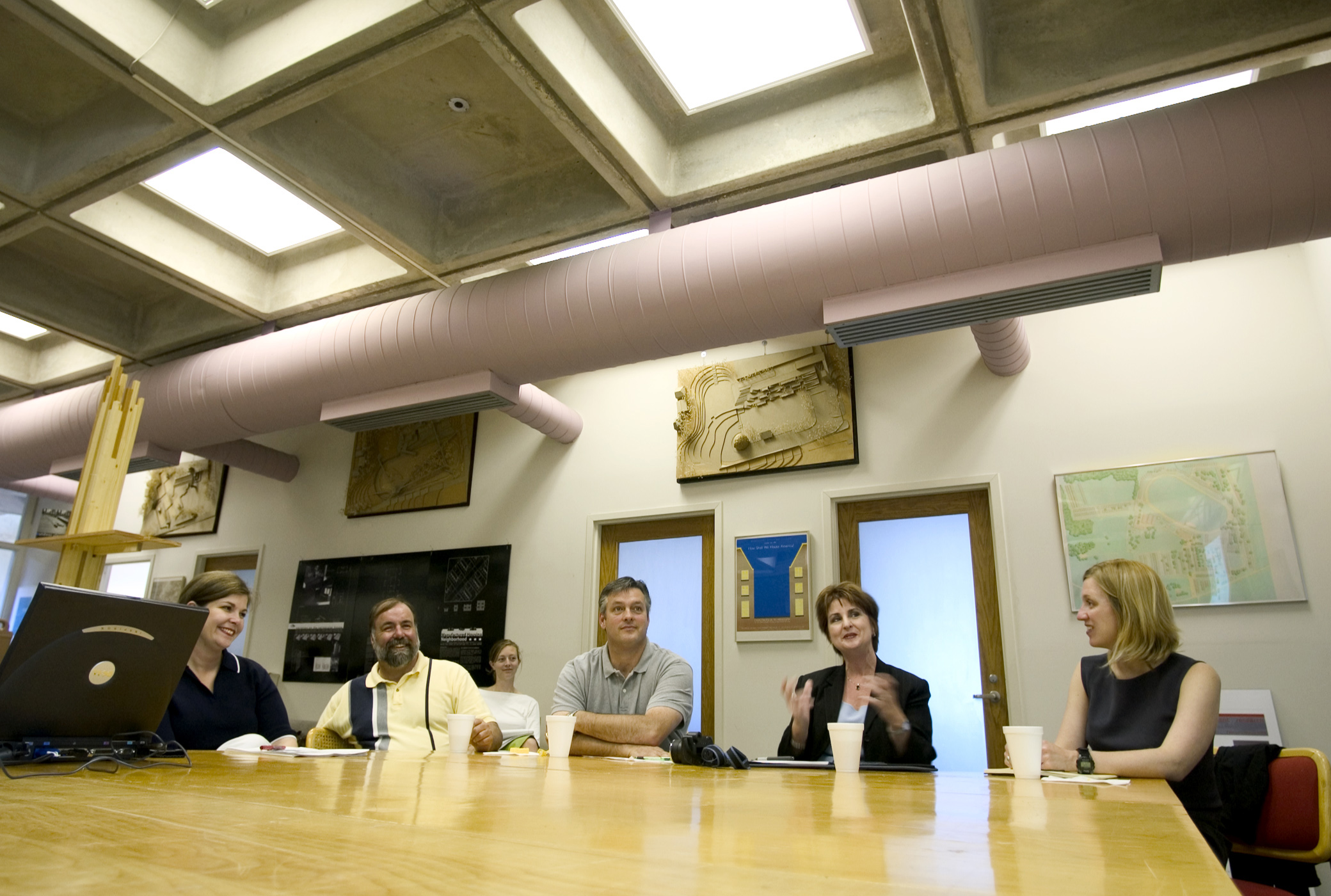Contact: Maridith Geuder

After nearly four months of study, visits and meetings with the city's citizens, the Carl Small Town Center at Mississippi State is presenting its recommendations to improve the quality of life in Byhalia.
Under the leadership of center director Kimberly Brown, nine students in a university architecture seminar developed detailed information about the community as it exists. The team also identified citizen concerns and needs, and developed proposals for improvements to enhance quality of life and economic progress.
"The Carl Small Town Center, since its founding, has focused on research and education to promote the state's small communities," Brown said. "The citizens and community leaders of Byhalia have been extremely supportive in our study of their city."
The research project was funded by the Tupelo-based CREATE Foundation and was conducted at no cost to the community.
A recent campus presentation to MSU architecture faculty and community representatives outlined some of the center's specific proposals for Byhalia. A community meeting is planned June 10 to present the proposals, solicit comments from citizens and identify priorities.
"The city, located in Marshall County, is on heavily traveled Highway 309 and is a pass-through location for many motorists," Brown said. "One of our goals is to help Byhalia find ways to transform itself into a destination for travelers and to identify potential funding sources."
Project co-director Michelle Weaver Jones of the state Department of Archives and History said the community is positioned to capitalize on its visibility.
"It's still a small town, but is anticipating growing pains," Jones said. "Our study is trying to help Byhalia prepare for this future."
Carl Center recommendations, among others, included:
Creation of a "civic district" tied to the historic Byhalia High School that can serve as a center of public activity and a visual "heart" of the town. The proposal suggests consideration of a central plaza at the termination of South College Street, with bordering buildings enhanced and reoriented toward the new plaza.
Improved pedestrian walkways and landscaping as part of the district upgrade.
Development of a playground in the district that would include swings, jungle gym, seesaws, monkey bars, and other recreational equipment. The plan also suggests a sidewalk/walking/bicycle path around the perimeter of the playground and new civic parking.
Attention to downtown revitalization, including enhancing storefronts, possible underground utilities, expansion of "green" spaces, and creation of a local historic district.
Improved "mobility" in the Church Street district by resizing and resurfacing streets and sidewalks and enhancing landscaping and lighting.
Rejuvenation of Highway 309 through strategic landscaping, sidewalks, a bicycle path, and an entry sign that identifies the city.
"We've tried to look at every aspect of community life and to suggest options that can be phased in as the community plans its progress for the future," Brown said. "Byhalia has a great deal of civic pride, and we're offering recommendations for ways it can reinvent itself."
Named for major MSU architecture benefactor and Viking Range Corp. owner Fred Carl, the Carl Small Town Center annually works with about 20 Mississippi communities. For information on other center projects, visit http://smalltown.sarc.msstate.edu.